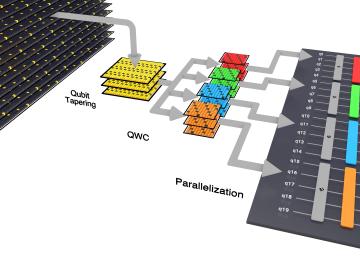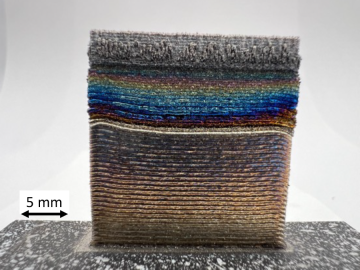
Filter News
Area of Research
- Biology and Environment (30)
- Clean Energy (28)
- Computer Science (1)
- Electricity and Smart Grid (1)
- Fuel Cycle Science and Technology (1)
- Fusion and Fission (14)
- Fusion Energy (3)
- Isotopes (10)
- Materials (31)
- National Security (17)
- Neutron Science (17)
- Nuclear Science and Technology (1)
- Supercomputing (44)
News Type
News Topics
- 3-D Printing/Advanced Manufacturing (6)
- Artificial Intelligence (14)
- Big Data (6)
- Bioenergy (9)
- Biology (16)
- Biomedical (3)
- Biotechnology (1)
- Buildings (6)
- Chemical Sciences (10)
- Clean Water (5)
- Climate Change (17)
- Composites (2)
- Computer Science (11)
- Coronavirus (1)
- Critical Materials (1)
- Cybersecurity (6)
- Decarbonization (17)
- Emergency (1)
- Energy Storage (7)
- Environment (28)
- Exascale Computing (11)
- Fossil Energy (2)
- Frontier (13)
- Fusion (7)
- Grid (10)
- High-Performance Computing (18)
- Hydropower (2)
- Isotopes (7)
- Machine Learning (10)
- Materials (21)
- Materials Science (7)
- Mathematics (2)
- Mercury (1)
- Microelectronics (2)
- Microscopy (3)
- Nanotechnology (4)
- National Security (15)
- Net Zero (3)
- Neutron Science (19)
- Nuclear Energy (14)
- Partnerships (6)
- Physics (10)
- Polymers (2)
- Quantum Computing (6)
- Quantum Science (3)
- Renewable Energy (1)
- Security (1)
- Simulation (19)
- Software (1)
- Space Exploration (4)
- Summit (7)
- Sustainable Energy (9)
- Transportation (4)
Media Contacts

After completing a bachelor’s degree in biology, Toya Beiswenger didn’t intend to go into forensics. But almost two decades later, the nuclear security scientist at ORNL has found a way to appreciate the art of nuclear forensics.

Dean Pierce of ORNL and a research team led by ORNL’s Alex Plotkowski were honored by DOE’s Vehicle Technologies Office for development of novel high-performance alloys that can withstand extreme environments.

Roane State Community College today announced the launch of a Nuclear Technology Program with a $100,000 contribution from UT-Battelle, LLC, which manages and operates ORNL for the Department of Energy.

Xiao-Ying Yu, a distinguished scientist at the Department of Energy’s Oak Ridge National Laboratory, has been named a Fellow of AVS: Science and Technology of Materials, Interfaces, and Processing, formerly American Vacuum Society.

Yarom Polsky, director of the Manufacturing Science Division, or MSD, at the Department of Energy’s Oak Ridge National Laboratory, has been elected a Fellow of the American Society of Mechanical Engineers, or ASME.

Using the full capabilities of the Quantinuum H1-1 quantum computer, researchers from ORNL not only demonstrated best practices for scientific computing on current quantum systems but also produced an intriguing scientific result.

Wildfires have shaped the environment for millennia, but they are increasing in frequency, range and intensity in response to a hotter climate. The phenomenon is being incorporated into high-resolution simulations of the Earth’s climate by scientists at the Department of Energy’s Oak Ridge National Laboratory, with a mission to better understand and predict environmental change.

ORNL nuclear chemist Clarice Phelps has long worked to educate the next generation of STEM scientists. A new endeavor will let her reach students entering college who need extra help mastering the basics they need to pursue careers in science.

When geoinformatics engineering researchers at the Department of Energy’s Oak Ridge National Laboratory wanted to better understand changes in land areas and points of interest around the world, they turned to the locals — their data, at least.

Research into a new, unique technology to fabricate composite metal parts for a wide range of applications operating in extreme environments across the aviation, space and energy industries is showing promise for additive manufacturing.


